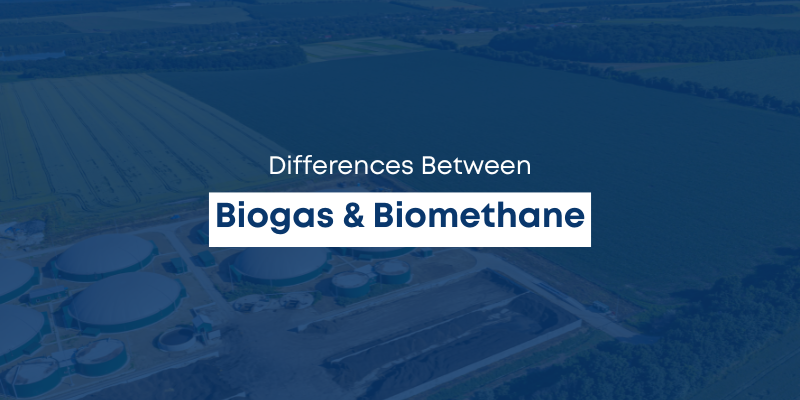As the world is opting for cleaner and more sustainable energy solutions, biogas and Biomethane have emerged as promising alternatives to fossil fuels.
While often used interchangeably, these two renewable gases have distinct characteristics, production processes, and applications.
Understanding the differences between biogas and Biomethane is essential for making informed decisions in energy planning, environmental policy, and green technology investments.
So, if you want to understand the difference between the two, read this blog till the end.
What is Biogas?
Biogas is a renewable fuel and energy source, commonly generated in anaerobic digestion (AD) plants where microorganisms break down organic materials such as food and animal waste. This biogas can then be upgraded to produce biomethane, and further processed into compressed biomethane using a dedicated compressed biogas plant.
Biomethane is mainly utilized in Combined Heat and Power (CHP) systems to generate electricity and provide heating for homes connected to the grid. In contrast, compressed biomethane gas is commonly used as a fuel for vehicles.
What is Biomethane?
Biomethane is an eco-friendly source of energy that is produced from biogas. This gas has a variety of environmental benefits as it repurposes methane, a potent greenhouse gas, and converts food waste and other organic materials that would otherwise end up in landfills into valuable energy.
The Difference Between Biogas and Biomethane
Biogas and Biomethane are both renewable gases derived from organic waste, but despite their similarities, they offer various important differences.
The key difference between the two lies in their composition: biogas is a mixture of various gases, including methane and carbon dioxide, whereas biomethane is a purified form of biogas with carbon dioxide, hydrogen sulfide, and moisture removed.
Thanks to this upgrading process, biomethane becomes suitable for injection into the gas grid, where it can be used to generate heat and electricity for homes.
How is Biogas Produced?
Biogas is generated through a process known as anaerobic digestion. It begins with the collection of organic materials such as food and animal waste, which are then transferred to sealed vessels called reactors, where the breakdown occurs in the absence of oxygen.
Inside the reactors, microorganisms decompose the feedstock, resulting in two main outputs: biogas and a sludge-like byproduct known as digestate.
The biogas is captured, often using CHP engines, for energy generation or further upgraded into biomethane, while the digestate is typically used as a nutrient-rich fertilizer.
During this biogas production, monitoring and analyzing the internal environment of reactors in AD plants is crucial for effectively managing and maintaining the composition of the biogas. This helps ensure the ongoing stability and efficiency of the anaerobic digestion process.
How is Biomethane Produced?
The collected biogas undergoes an ‘upgrading’ process, producing Biomethane. This upgrading process involves separating the different gases in biogas by leveraging their distinct properties, isolating methane as one of the key components.
There are several methods of separating the various gases present in biogas, like Biomethane, through the upgrading process, and compressed Biomethane gas, through a compressed biogas plant.
Conclusion
Ultimately, this highlights the key difference between biogas and biomethane. Suppose you are looking to produce compressed biogas (CBG) as a sustainable alternative to compressed natural gas. In that case, it’s important to invest in a reliable compressed biogas plant from a trusted compressed biogas plant manufacturer.
 :
https://in.pinterest.com/biogaspurifier8154/
:
https://in.pinterest.com/biogaspurifier8154/

